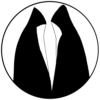“Nelson is at the peak of his powers with this delicately windswept set of desert ambience and candlelight blues” – BOOMKAT
“Mark Nelson’s music comes from an ancient yet infinitely close place: it has a soul” – NARC
It is hard to overstate the importance of Labradford. Other bands have sold more records and have been given more praise. But very few have exerted the long term influence Labradford have and not many can claim to have inspired musicians across as broad a range of genres. After releasing a debut 7″ single in the spring of 1993, Labradford recorded their debut album with Rob Christensen late nights at American University in Washington, DC. Prazision LP happened to be the initial release on Kranky Records.
During the summer of 1997, Mark Nelson, guitar player and singer of the legendary Labradford, wanted to explore the possibilities of sampling and computer technology as well as his interests in dub and techno. Mark started recording a full length album for Kranky at home and at Sound of Music Studios in Richmond, Virginia. The self-titled, debut Pan American album came out on Kranky in early 1998.
Nelson continued to work on Pan American material as he worked with Labradford, learning to play pedal steel guitar, releasing singles on European labels and getting some studio time with engineer Casey Rice. Rob Mazurek from Chicago Underground Trio and Alan Sparhawk and Mimi Parker of Low contributed cornet and vocals, respectively. The resulting album, 360 Business / 360 Bypass, was released by Kranky in North America (and Blast First in Europe) in early 2000.
More singles and compilation tracks followed, along with the odd live performance. Nelson’s placement behind a synthesizer and mixing desk belied the improvisational nature of the live mix. Between sternum-rattling bass rhythms and Nelson’s willingness to challenge an audience with outbursts of static, Pan American shows were more than the usual knob-twiddling and smooth noodle maps.
The third record was entitled The River Made No Sound and was released by Kranky in North American and Vertical Form in Europe in April 2002. Mark Nelson told Eyemagazine in October 2002 that “When I started I really had it in mind to make a more rhythmic record influenced by house music. I did the whole thing at home by myself, so I guess by the end my natural inclination towards ambience and peaceful textures won out.” Stripped back compared to previous albums, The River Made No Sound, traded dub undertow for percussive points, field recordings and an ominous hum.
Quiet City (Kranky 2004) combines the computer-centric approach of The River Made No Sound with the organic instrumentation that marked Nelson’s work in Labradford and the first two Pan American albums. Three of the eight tracks were recorded with Charles Kim (Sinister Luck Ensemble) and feature upright bass, drums, trumpet and flugelhorn. Nelson even sings a bit. The rippling electronics and muffled beats of the first three Pan American albums are still there; distended into elegiac, resonant, wavering, and ambient song craft. The CD edition of Quiet City comes with a DVD that contains a video essay shot and edited by Mark Nelson and Chicago visual artist Annie Feldmeier.In 2011, Mark Nelson finally returned with a new album under the Pan American moniker – and it’s another triumph of sublime understatement. For Waiting, For Chasing (on MOSZ) is underpinned by delicately caressed and manipulated Flugelhorns, Tibetan Singing Bowls and Chinese Cymbals, processed, weaved and loved into a throbbing mass of neon loveliness.
With Cloud Room, Glass Room (Kranky 2013) Pan American quietly slipped back into our consciousness as a band proper, now adding the estimable talents of Steven Hess (Cleared/Haptic) and Nelson’s former Labradford bandmate, Robert Donne to the project. While Nelson assuredly handles all production, the live feel is definitely more prominent, folding in the patter of Hess’s percussion and Bobby Donne’s languid bass at the centre of seven beautifully diffuse soundscapes bordering on the frontier lands of post-rock, dub techno and ambient electronica, yet never clearly falling within any one sector.
A Son (Kranky 2019) is less a distillation or divergence than it is a return to his musical and spiritual beginnings. Spare, subdued, and largely acoustic, A Son unfurls like late summer dusk on the edge of town, expansive but intimate. The emphasis on uncluttered arrangements and the centrality of the guitar and vocals reveal these songs as the most direct and emotional statement of his career.
In 2022, the glacial distillation of Mark Nelson’s “romantic minimalism” achieves unique fruition on his latest Kranky collection, The Patience Fader. Composed during the highly isolated summer of 2020, the pieces took shape as meditations on “roots and mourning, trying to connect with those deep hidden rivers that lead to a greater communality.” There’s something ageless, scarred, and American about this music, both displaced and devotional, the ghost of rust belts and dust bowls looming in a horizon of deepening dusk.Mark Nelson also released 2 albums on Kranky under the name Anjou, with his friend Robert Donne.

